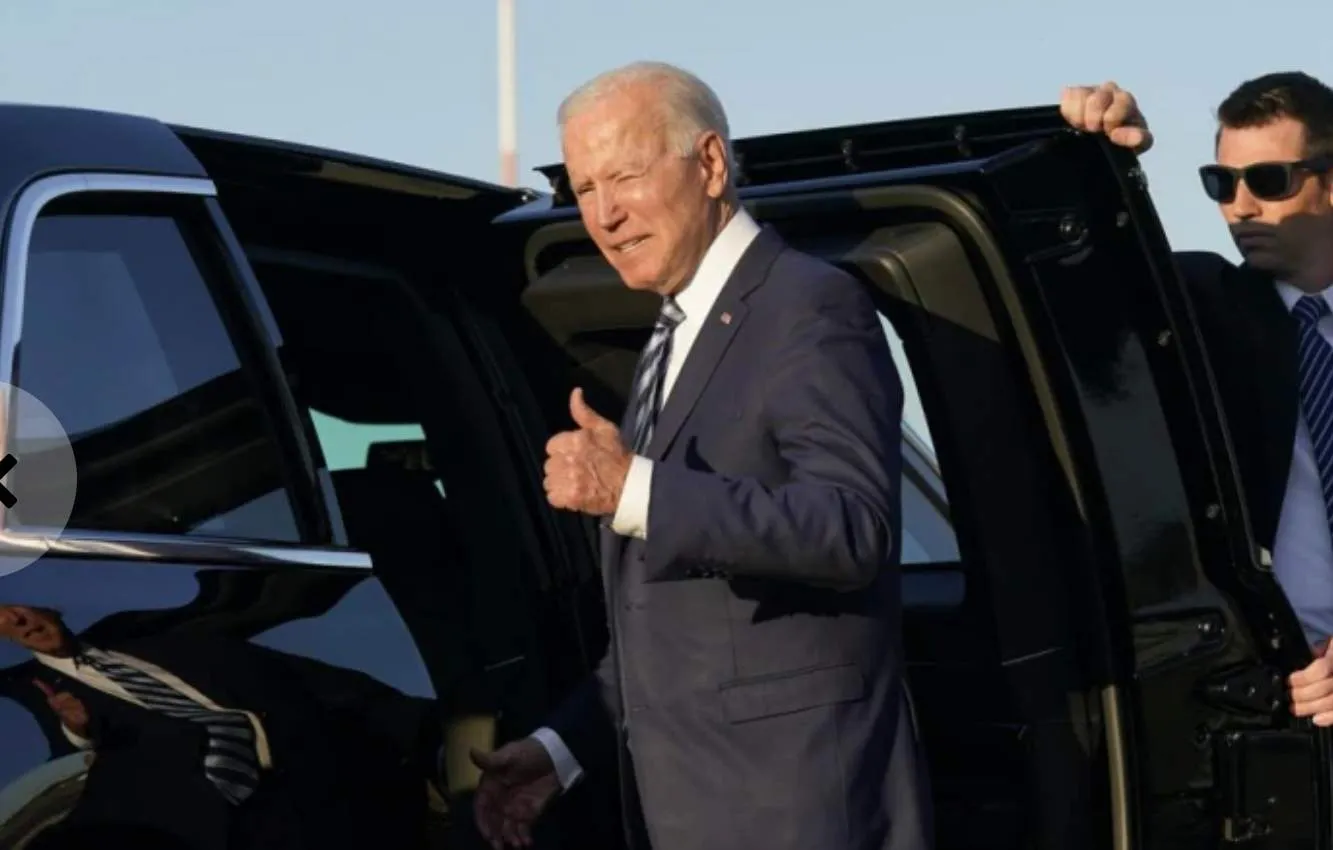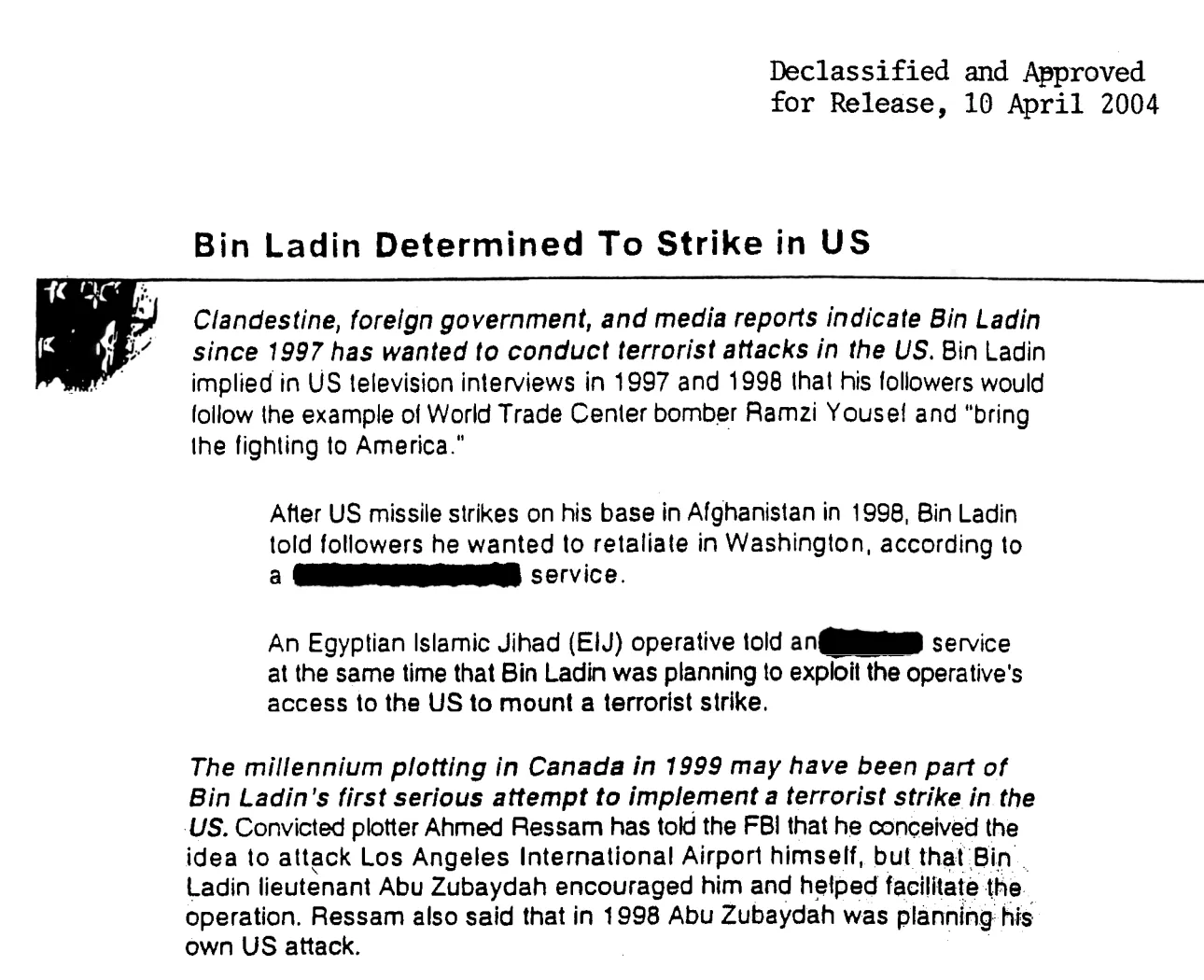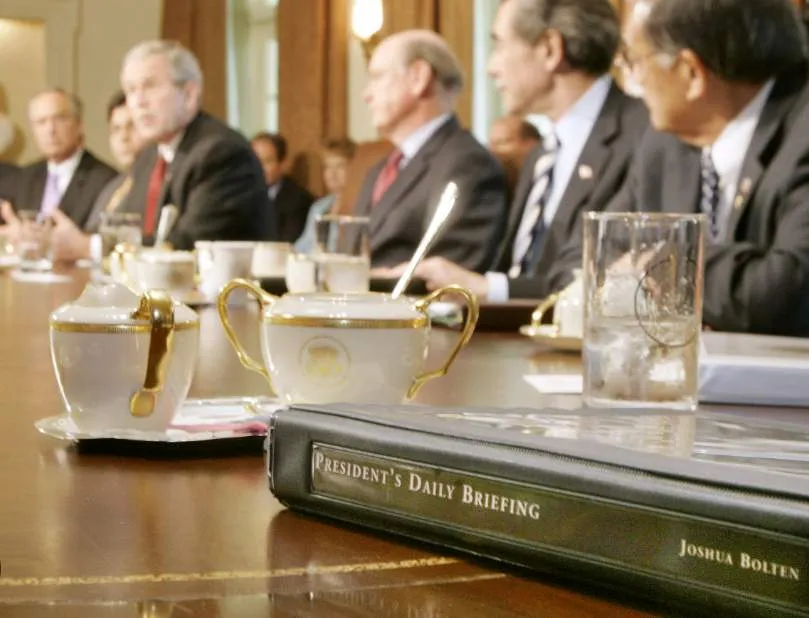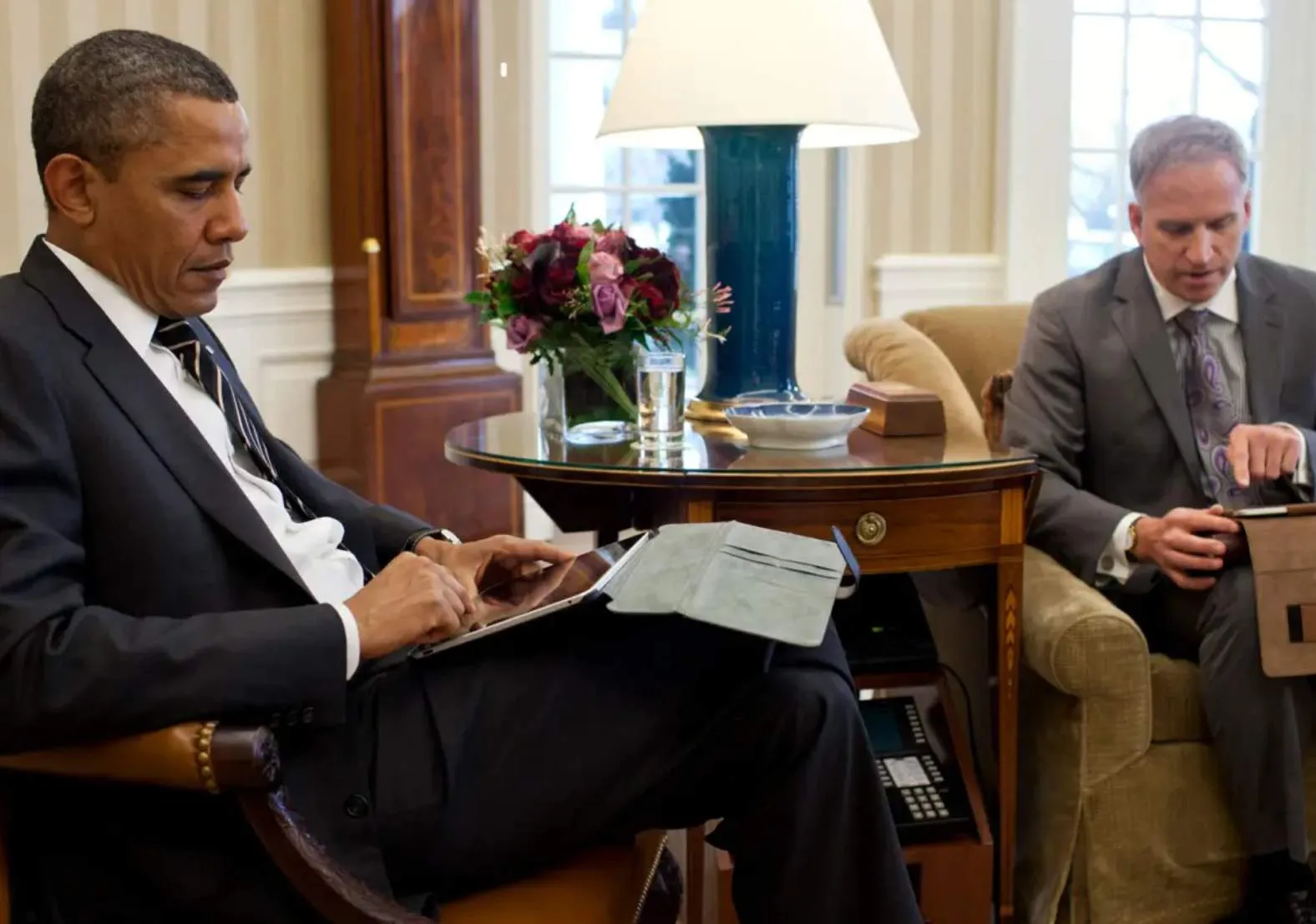10 Spy Secrets of the President’s Daily Brief
The President's Daily Brief (PDB) serves as a conduit for vital intelligence, distilling complex information into concise, actionable insights for the US president.

The PDB may not share the heart-pounding intensity of Katherine Heigl in State of Affairs, but it’s hard to imagine a more urgent brief. The president is updated daily on SIGINT, analysis, covert ops, and reports from sources and allies.
The brief includes CIA, NSA, FBI, and Defense Department input among other agencies. Today, we’re reading you in on 10 PDB secrets.

1. Top-down leaks
Some PDB leaks come straight from the top. President Joe Biden knocked Russian leader Vladimir Putin during a 2021 speech to the Office of the Director of National Intelligence for Putin’s alleged Russian intervention in the 2022 midterm elections, noting his PDB contained the details. “In today’s PDB you all prepared for me, look what Russia is doing already about the 2022 elections and misinformation. It’s a pure violation of our sovereignty,” Biden said.
In President G.H. Bush's book A World Transformed, he describes Iraq’s invasion of Kuwait on August 2, 1990 and his 7:30 am PDB with CIA briefer Hank Applebaum. Bush, National Security Advisor Brent Scowcroft and then-Secretary of State Jim Baker discussed their next steps. "Jim had been warned of the ominous signs in the Gulf and had already spoken with [Eduard] Shevardnadze about the danger of an invasion,” Bush writes. “With the news of the invasion, Jim had urged the Soviets to join an arms embargo of Iraq, and Shevardnadze departed for Moscow to consult with Gorbachev."
In an effort to contain leaks, President G. W. Bush cautiously shared his PDBs with the National Commission on Terrorist Attacks, an independent body created by Congress to investigate 9/11 - although the decision came after much debate and compromise. In the end, three commission members and the staff director were allowed to see the original PDBs from the Bush and Clinton years and write a summary for their peers.

2. The PDB legal tussle
After much sturm und drang, the CIA released thousands of PDBs in 2015 after a court battle including sanitized versions of briefings for Presidents Kennedy and Johnson (and later Nixon and Ford) on intelligence gathered during the 1962 Cuban Missile Crisis, the Arab–Israeli Six-Day War, the Soviet invasion of Czechoslovakia, and Vietnam. About 5,000 briefs were released in all. We’ll never really know with certainty what the presidents were told because intelligence is excised from the unclassified versions. In one article, for example, the subject was 'Canada', and the rest was just a blank page.

3. Formats
There’s no ‘right’ way to deliver the PDB. During the administration of Richard Nixon, who had a somewhat antagonistic relationship with the CIA, a courier brought the PDB to Secretary of State Henry Kissinger's office, which then delivered it to the Oval Office for Nixon to read at his convenience throughout the day. President President Obama read his PDB digitally on a tablet, often alone. Trump preferred bullet points.

4. What’s the content?
John Negroponte, former director of National Intelligence said his typical brief included six or seven articles, usually one paragraph to one page long, plus two longer 'deep dive' pieces delivered during a 30-45 minute meeting. In one of President G.W. Bush’s PDBs, for example, the president and Secretary of Defense Donald Rumsfeld discussed Abu Zubaydah, the first suspected terrorist taken into the CIA detention program.
Back in 2001, more than 60 percent of the President’s Daily Brief material was sourced from signals intelligence (SIGINT), a figure that has likely increased. A leaked PDB document indicated that PRISM - run by the NSA - was a source of 1,477 items in the 2012 calendar year.

5. 9/11 and the PDB
Between January 20 and September 10, 2001, there were more than 40 PDB intelligence articles related to Osama bin Ladin, according to the 9/11 Commission Report. The Commission called for the declassification of a PDB from August 6, 2001, entitled Bin Ladin Determined To Strike in US, which was released with redactions.
Former National Security Advisor Condoleeza Rice told a press briefing that the August 6, 2001 PDB included information about bin Ladin’s methods of operation from a historical perspective dating back to 1997, including that he might choose to hijack an airliner and hold passengers hostage in exchange for the release of one of their operatives. She said the report contained a generalized warning and no intel that al-Qaeda was discussing a particular planned attack against a specific target.
"The brand new social experience where you activate your gaming skills as you train like a spy."
- TimeOut
Take on thrilling, high-energy espionage challenges across different game zones.

6. From paper to tablets
President Harry S. Truman received the first ‘Daily Summary’ report and JFK received the first President’s Intelligence Checklists (PICLs, pronounced ‘Pickles’), a seven-page, 8x8-inch booklet that summarized day-to-day intelligence and analysis on current and future national security issues. The PICL was replaced by the PDB in 1964 during the Johnson administration. Throughout most of the PDB's history since then, articles were printed on high-quality paper and inserted into a leather binder but on February 15, 2014, CIA presses printed the final hard-copy PDB edition. Now they are uploaded to a Top Secret tablet computer.

7. Who set the bar highest for the PDB?
CIA analysts work overnight to prepare the bulk of the articles so they are ready by about 4 am or 5 am but not every president reaches for his secret morning newspaper immediately. President G.W. Bush was an avid reader and questioner, however. He liked to have his briefing at the start of every day. “A few minutes before 8 am we would go to the outer office of the president until he was ready,” Negroponte told the BBC. “He took that briefing every day of the week, Monday through Friday, and Saturdays as well. He was very disciplined about it, and he was what the intelligence community would call 'an excellent customer’.” Bush even brought his briefer with him on trips, according to David Priess, author of The President's Book of Secrets.

8. Obama’s EIB
President Obama, who took office during a global economic downturn, wanted a supplement to the daily PDB - an Economic Intelligence Brief (EIB) with classified reporting and analysis on issues including the economic implications of international political developments, global oil market dynamics, and how US allies' budgetary difficulties could reduce security cooperation, according to David Priess. Obama’s PDB continued to contain articles analyzing counterterrorism issues and other urgent matters.

9. Who contributes?
In addition to the CIA, PDB intelligence is sourced from the NSA, DIA, National Geospatial Agency, the National Reconnaissance Office, and the FBI. It can also involve a variety of agencies in the US or abroad. “Sometimes you get one of those silver bullets, like we got the phone number of Abu Musab al-Zarqawi [the head of al-Qaeda in Iraq], and if you have that then, of course, you can work with the National Security Agency, or [Britain’s] GCHQ, to track his movements,” Negroponte said.

10. Is the PDB just a glorified newspaper?
"In some areas - like what's going on politically in Israel or Germany - the Financial Times may be better informed than the PDB,” Robert Gates, former US Defense Secretary, has said. “But when it comes to Iran or North Korea, the media can't hold a candle to it."
Vice President Dick Cheney once called PDBs “the family jewels”. The briefs have failed to highlight issues at times, however. ‘The book’ - as it is sometimes called - notably failed to predict for Jimmy Carter the Iranian Revolution in 1978-79 and missed the al-Qaeda plot that led to 9/11.
Even if the PDB does bring issues to the president’s attention, POTUS can choose to ignore them. President Trump’s first briefing, for example, covered terrorism, cyber security, ISIS, Syria, Iraq, and Iran’s nuclear program. A follow-up focused on Russia, China, and North Korea. By the middle of Trump’s term in office, however, briefings were reduced to two 45-minutes twice a week - and they were discontinued altogether after the deadly insurrection on the US Capitol on January 6, 2021.
Trump also stopped the incoming administration from seeing the PDB. His officials didn’t recognize President-elect Biden so Biden was barred from receiving PDB during the transition period. After being sworn in on January 20, 2021, Biden barred Trump from receiving intelligence briefings (generally given as a courtesy to former presidents) saying there was ‘no need’.
SPYSCAPE+

Join now to get True Spies episodes early and ad-free every week, plus subscriber-only Debriefs and Q&As to bring you closer to your favorite spies and stories from the show. You’ll also get our exclusive series The Razumov Files and The Great James Bond Car Robbery!


Gadgets & Gifts
Explore a world of secrets together. Navigate through interactive exhibits and missions to discover your spy roles.
Your Spy Skills
We all have valuable spy skills - your mission is to discover yours. See if you have what it takes to be a secret agent, with our authentic spy skills evaluation* developed by a former Head of Training at British Intelligence. It's FREE so share & compare with friends now!
* Find more information about the scientific methods behind the evaluation here.


Stay Connected
Follow us for the latest
TIKTOK
INSTAGRAM
X
FACEBOOK
YOUTUBE